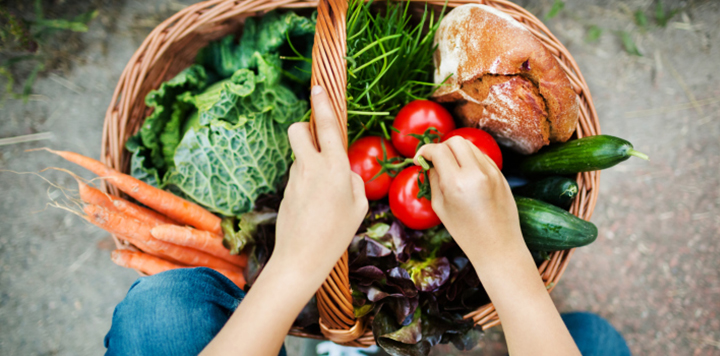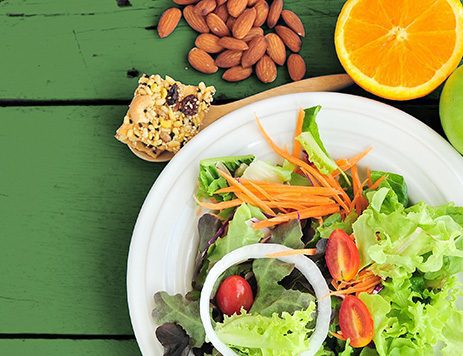
Top 10 Superfoods You Should Know
What do spinach, walnuts and blueberries have in common? They are all in the same food group: superfoods. Yes, superfoods include some of the more mysterious fruits and vegetables in the produce aisle, but they also include household staples that you’re familiar with.
Superfoods is a way to describe nutritionally dense foods brimming with health benefits. So, while superfoods may be a buzzword, there’s nothing superficial about them. Include these 10 superfoods in your diet and reap their nutritional super powers.
1. Blueberries
Benefits: Full of antioxidants, manganese, vitamins C and K, blueberries boost the immune system, preserve vision and brain health, reduce inflammation and aid in digestion. Beyond those super powers, they are low in fat and sodium, high in dietary fiber and contain only 80 calories per cup.
Peak Season: June and July
Suggestions: You can eat blueberries fresh, frozen or dried. Look for berries that are deep purple to blue-black and have firm, dry, smooth skin. Their color, not size, is what indicates maturity. If they are covered in the refrigerator, they last about 10 days after purchase. One of the best parts about blueberries is how well they go with other berries that contain similar superfood qualities, like raspberries, strawberries and blackberries. Try this blueberry recipe:
2. Edamame
Benefits: You may only know edamame as a pre-meal snack at Japanese restaurants, but these boiled green soybeans pack a serious nutritional punch. Just a half cup provides 9 grams of fiber, 11 grams of protein, 10% of your daily value of Vitamin C, 10% of your daily value of iron, 8% of your daily dose of vitamin A and 4% of your daily calcium in only 120 calories. These vitamins and minerals are associated with a stronger immune system, better lung function and healthy skin.
Peak Season: Summer
Suggestions: You can find them in the frozen vegetable section shelled or with pods, already cooked and ready to be thawed and eaten. Try this edamame recipe:
3. Walnuts
Benefits: Known as the most nutritionally beneficial of the nut family, walnuts have certainly earned their spot on this list. Full of magnesium, phosphorus, antioxidants, protein and fiber, they have been found to boost heart health, help lower blood pressure and maintain healthy weight. They also contain the highest amount of alpha-linolenic acid (ALA) among any nut.
Peak Season: Late August through late November
Suggestions: Eat walnuts in moderation as they are rich in good fats, like omega-3 fatty acids and polyunsaturated fat. Try this walnut recipe:
4. Brown Rice
Benefits: A great superfood vehicle, brown rice is also a superfood within itself. One cup of brown rice provides 88% of your daily value for manganese and 14% of your daily value for fiber. It also contains selenium, which works with Vitamin E to help prevent cancer, and magnesium, which is necessary for healthy bones. Brown rice is also high in fiber and helps produce energy.
Suggestions: Store in a cool, dry area to maximize shelf life. Try this brown rice recipe:
Warm Brown Rice, Chicken, & Arugula Salad
5. Spinach
Benefits: With more nutrients per calorie than any other food on Earth, it’s no wonder spinach has long been touted as a superfood. It is loaded with vitamins A, D, E and K along with folate, phytochemicals and a host of trace minerals. Unique from other green veggies, this power vegetable contains carotenoids that protect against eye diseases like cataracts and macular degeneration. The large dose of vitamin K, calcium and magnesium in spinach also make it a great source for building strong, healthy bones. Spinach even alkalizes the body, which is great as many of our diets are heavy in highly acidic foods that drain energy and increase the chance for obesity.
Peak Season: March to June
Suggestions: Spinach lasts three to four days in a plastic bag or box in the fridge. Keep in mind when buying spinach that it has a high water content and reduces to about a quarter of the size when cooked. Try this spinach recipe:
Spinach, Brown Rice, & Beet Salad
6. Brussel Sprouts
Benefits: The vitamins and minerals in Brussel sprouts act as a powerful antioxidant that boosts the immune system, provides energy, supports blood and bone health, and more. Brussel sprouts contain Vitamin A, C, E, K, potassium, iron, magnesium, phosphorus, zinc and calcium. Additionally, they are great for weight loss because they provide significant dietary fiber, making you feel full without a large amount of sodium or fats. Brussel sprouts also contain folates, which protect the body from some forms of heart disease and is only present in a few foods.
Peak Season: October until the Spring
Suggestions: Although they have a bad reputation for their taste when overcooked, Brussel sprouts are delicious when made properly. Brussel sprouts go well in juice, boiled, sautéed, steamed, roasted or even thinly sliced and baked. When wrapped, they should last at least 3-5 days in the refrigerator. Try this brussel sprout recipe:
Salmon Cakes & Roasted Brussel Sprouts
7. Eggs
Benefits: Among the best protein sources, eggs contain all 8 amino acids and are loaded with nutrients. The yolks contain choline, which helps protect heart and brain function and prevents cholesterol and fat from accumulating in the liver. Eggs also raise HDL (good) cholesterol and convert small, dense LDL (bad) cholesterol to the benign large LDL variety. In addition to iron, copper, selenium, zinc and Vitamins A, B2, B6, B12, D, E and K, they are rich in unique antioxidants like Lutein and Zeaxanthine, which can help prevent eye diseases. One large egg is only 78 calories and provides 5 grams of fat and over 6 grams of protein. They even score well on the Satiety Index, meaning they make you feel full and cause you to eat less calories overall.
Suggestions: Eggs are one of the most versatile foods to cook. Mix it up and try cooking your eggs in these six easy ways. Try this egg recipe:
8. Apples
Benefits: It turns out that one a day really does help keep the doctor away! Loaded with powerful antioxidants like quercetin and catechin, apples (especially their skin) have been linked to lower instance of cell damage like that of cancer and cardiovascular disease. They also have about twice the fiber of other common fruits, which means they will aid digestion, lessen inflammation and boost immunity. Best of all, an average-sized apple is under 100 calories.
Peak Season: Autumn
Try this with apple recipe:
9. Sweet Potatoes
Benefits: They may remind you of Thanksgiving, but these nutrient-rich tubers can offer benefits year-round. They are packed with calcium, potassium and tons of vitamins like A and C, which boost immunity and aid in bone and tooth formation, as well as digestion. They also contain sizable amounts of manganese, B1, B2, B3, B6, magnesium, niacin, phosphorus, copper and iron, which gives you energy, reduces stress and facilitates red and white blood cell production. Just one cup of cooked sweet potatoes with skin is 180 calories of complex carbohydrates, 6 grams of fiber and 4 grams of protein.
Peak Season: Autumn
Suggestions: As sweet potatoes combine sweet and earthy flavors, they go best with poultry. Store sweet potatoes in a cool, dark place to maximize their longevity. Try this sweet potato recipe:
10. Red Peppers
Benefits: Did you know that green peppers are just unripe red peppers? And since they are one of the best sources of Vitamin C available, red peppers deserve a place in your diet. Just one cup provides 200% of your daily value of Vitamin C, 3 grams of fiber and only has 30 calories. The carotenoids they contain help stimulate immune function, while the Vitamin B6 and magnesium can help reduce anxiety and the Vitamin A helps improve eye health. Red peppers even activate thermogenesis, which can increase your metabolic rate.
Peak Season: July through September
Suggestions: Red peppers last in a plastic bag in the fridge up to one week and can be eaten raw or cooked. Try this red pepper recipe:
You’ve gotten to know ten of the top superfoods, but as with anything good in life, balance is the name of the game. A well-rounded diet includes a wide variety of foods, from super to savory and everything in between.













